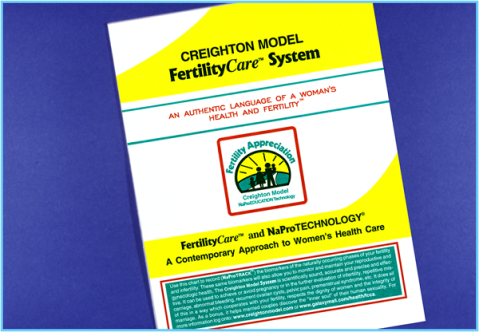Scenario 1: Suddenly it’s been 3 minutes and there are two lines on that test, and the two weeks I’ve been waiting for this moment hardly even existed.
Scenario 2: That surreal day of labor and push, push, push! and first meetings was 2 months ago, and we feel like she’s been here all our lives.
It’s 2016. Where has the time gone? For me, 2015 was a big, wonderful, crazy ball of blazing-fast new experiences. And I think I must’ve asked myself that question a few million times.
So when I really think through it, I can follow the minutes down into these wormholes:
1. Into your body.
I have this theory that time is physically absorbed into your bloodstream. This is how aging happens. And how, when you’re pregnant, every day gets a little bit tougher (the last few weeks are the craziest) and yet spins by a little bit faster.
It’s because your womb is filling up with 9 months of new life. That means all those extra calories you’re consuming, the extra water you’re drinking every hour, and the all-encompassing thoughts of “I’m carrying a baby around with me right now. How is this a thing?” are adding up. The end result is a brand new baby who is much greater than the sum of all those days. Suddenly the last 9 months—which stretched out endlessly in front of you at the beginning—are behind you in the blink of an eye.
(I’m sure it’s also how moms “forget” the work of labor and, soon enough, look forward to a chance to do it all over again.)

2. To the dogs.
Wasted time is wasted life. For the first few weeks of a new baby’s life, it’s vital for Mom and Dad to do absolutely nothing they don’t want to with the time between feedings. Two hours can pass by too quickly, and when you’ve got a newborn at home, sleeping is a wonderful answer to the “Where has the time gone?” question.
Fast forward a few months, though, and I can’t always forgive myself those wasted hours. Maybelle is sleeping well at night; I should be adulting during the day. If all of those 2-4 hour blocks are spent on nothing much more than Netflix and the couch, it’s my own fault. But if they’re spent on laundry, errands, and maybe blogging a little here and there? That’s a win.
3. Over the rainbow.
Here’s another cliché for you: hindsight is 20-20. Want another? The grass is always greener on the other side. Clichés are clichéd for a reason, and that reason is that they’re almost always true.
When you’re stuck in the middle of an ultra-fussy growth spurt, and suddenly your easygoing baby is inconsolable for hours at a time, and you’re wondering why you have to relearn to be a mom every single day because what worked yesterday isn’t doing the job today, you look back on the last easy week with nostalgic longing. I catch myself doing this all the time. What happened to my happy baby? Why can’t tonight be like last night?
But here’s the thing: Maybelle is the product of every growth spurt’s progress. When the last one was over, she started smiling and cooing at funny faces. The one before that left her opening her eyes to the world, instead of staying cozied up in her own dreams all the time. So what will the end of this growth spurt bring? Being a mom has taught me that no minute spent embracing this moment—even if you’re also looking forward to the next—is wasted.
Even the tougher minutes are worth your love and attention right now. Enjoy them if you can, endure them no matter what, and know that yesterday wasn’t objectively better just because it was easier.
4. Onto the internet (and, hopefully, some paper).
The absurd procrastinator in me is so, so thankful for smartphones and Instagram. If I raised my own family before this century—when parents had to remember cameras, their associated batteries and film/memory cards, getting the resulting images printed, and then sharing those prints with their extended families—I’d be a hot mess of forgotten moments and missed photo opportunities. In that way, the instant gratification and real-time results of social media are a blessing.
Still, nothing beats a thoughtfully composed, physical photo album or a well-documented baby book. And that’s something I need to get better at.
The reality of parenting is that you experience every moment thinking, “Wow, I will never forget this milestone!”—and then, a week later, you can’t quite recall the exact tone of voice that inspired that first smile in your little one. So don’t be ashamed and don’t lose those memories: document everything, and share the moments that fill your heart to bursting. You’ll be glad you did.
5. Into your family.
All that time I spent fretting over what I did (or didn’t) eat and drink, what vitamins I took and when, how I clocked in my exercise—all of that resulted in a healthy, happy baby born at term. The time my husband spent fixing up little things in our house, keeping me happy and comfortable during the pregnancy, and looking forward to fatherhood resulted in a wonderful foundation for our growing family. And the time we spent enjoying each other’s company—just the two of us—while we still could resulted in a stronger, happier marriage and a partnership that has saved us both more than once.
The time we share with others results in the most growth. When I obsess over myself for too long, that’s when my anxiety jumps, my energy plummets, and my confidence wavers. But when I focus on making my husband as happy as he makes me, helping my baby grow, and giving my family the best chance for bliss, that’s when we all come out on top.
The question only gets bigger from here. In 2015, my husband and I decided started trying for a baby, learned we were expecting our first child, enjoyed a healthy pregnancy, welcomed our daughter into the world, and began learning how to be parents during her first two months of life outside the womb. In sixteen years, I know we’ll look at her and wonder when this little baby disappeared and a young adult began to emerge.
Here’s the funny thing about life: the bigger the milestones, the smaller the clock. Love them—and live them—while you can.
(Photo taken by Roni Rose Photography of Huntley, IL. Roni and her husband are magicians with cameras; check them out!)


